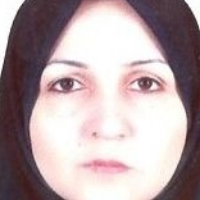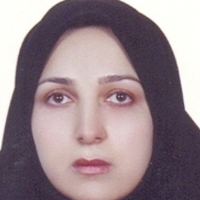Investigating the Relationship between Land Cover and Thermal Island Changes Using Single channel Algorithm and Decision Tree Conceptual Method (Case Study: Ahvaz)
The phenomenon of Thermal Island as one of the urban hazards is the result of the way of activity and physical development of cities as well as extensive changes in the land use pattern around cities. The surface temperature of the earth is not only affected by the amount of energy received by the sun, but also by the environmental conditions of the place, especially the reduction of suburban arable land, vegetation degradation and increasing impermeability levels and potentially prone to heat production and pollution. Heated island is a term used to describe the warmer atmosphere and higher temperatures of cities compared to non-urban areas. Determining the geographical distribution and nature of UHI, as well as the factors influencing its occurrence or severity, is something that is now efficient, fast, and inexpensive using satellite imagery and remote sensing techniques. Ahvaz is one of the metropolises with ethnic diversity and mixed subcultures that has experienced a large and rapid increase in population and area over the last three decades and the city has expanded in different directions from south to southwest and north to northeast Has found. One of the prominent consequences of this issue is the emergence and strengthening of the Heated island in this city.
To determine the spatial-place changes of the heated islands of Ahvaz and also to determine its relationship with land use changes, first the Landsat satellite TM sensor images in the last 30 days and Envi software were used and the following main steps were performed:Stage 1 - Preparation of thermal map of the city: To calculate the temperature of the single channel algorithm (SCA) in order to extract LST, an extended infrared thermal band was used and to calculate it, Equation 1 was used. Ts = γ {𝜀1- (YLsensor + Ψ2) + Ψ3} + δ Here are five essential steps you can take to begin the process of preparation for mediation. To calculate each of the parameters in the equation below 5 consecutive steps as described in the headings The first step is to calculate the spectral radius The second step is to calculate the light temperature of the sensor The third step is to calculate the radiative power Step 4, calculate the values of γ and δ Step 5, calculate atmospheric parameters Stage 2: Prepare a land use map using the decision tree: The function of the model is a branch that consists of three levels of decision making and finally to determine the six layers of land cover (including agricultural land, rangeland, irrigated land, heights (Topography), land with little vegetation and built-up lands. In the model run, after applying the preprocessors to the Landsat images, the corresponding images were created for classification using NDVI, DEM, NDWI and LST indices. Setting a threshold for the NDNI index (NDVI> 0.26) vegetation is isolated from other data. In the correct branch, the next node was isolated using NDWI index (NDWI≤0.0) and determination of rangeland class threshold, agricultural land and water. In the third decision-making branch, based on the thresholds defined in the image indices (DEM≥40), DEM topography was determined, Were introduced.
Statistical study of the trend of change in land surface temperature and construction index and the ratio of change of other carabis to urban land uses showed that the trend of change is the average construction of the ascending course and the average temperature of the ascending course and the trend of changes with the transformation process With the expansion of the city of Ahvaz, their vegetation and land have been destroyed and turned into urban lands, and now the thermal island has been directed from the inside of the city to the outskirts. The temperature increase ratio of the urban area was higher than the whole study area.
Based on the results, the temperature of Ahvaz city increased from 282.96 degrees to 287.02 degrees Kelvin between 1988, which shows a growth of 2% and an increase of 4 degrees. Spatially, the highest temperature increase in the city is related to the east and southeast of the city, where agricultural lands and lands with little vegetation have been converted to industrial town and industrial uses and become a source of heat production in this metropolis. Has been. Also in the western part of the city, due to the further expansion of the city and the implementation of residential preparation projects - the NDBI index confirms the same - there has been an increase in temperature. Other influential factors in the spatial change of temperature in these parts of Ahvaz city are the existence of main roads such as Ahvaz-Abadan highway (southern part of the city), Ahvaz-Bandar Imam Khomeini highway (eastern part). Due to the asphalt cover of these routes and more vehicle traffic, they have caused an increase in the thermal map of the region. The lowest temperature in 2020 is related to the areas around the Karun River. Among the factors that have caused the low temperature in this place compared to other parts of Ahvaz in 2020, we can see the existence of the government park, Shahid Chamran University with a lot of green space and low-density residential texture and more open and green space than they mentioned other parts of the city as well as the wetlands of the last two years. Analysis of the trend of UHI changes and increase in construction using Landsat time series images showed an increase in urban temperature compared to the surrounding area in 1988. This shift in 2020 was due to an increase in regional temperature compared to the city due to river flooding. , Increase in construction and industrial activities in and around the city. Due to the environmental dangers of the Heated island, which directly and indirectly affect urban air pollution, greenhouse gas emissions and global warming, disrupt thermal comfort, increase water and electricity consumption, and exacerbate diseases such as asthma They leave, It is necessary to prevent the change of agricultural use to urban areas, and within the city, between dense textures and industrial areas, by creating vegetation in the form of parks and gardens, tried to prevent the rise in surface temperature.
- حق عضویت دریافتی صرف حمایت از نشریات عضو و نگهداری، تکمیل و توسعه مگیران میشود.
- پرداخت حق اشتراک و دانلود مقالات اجازه بازنشر آن در سایر رسانههای چاپی و دیجیتال را به کاربر نمیدهد.




